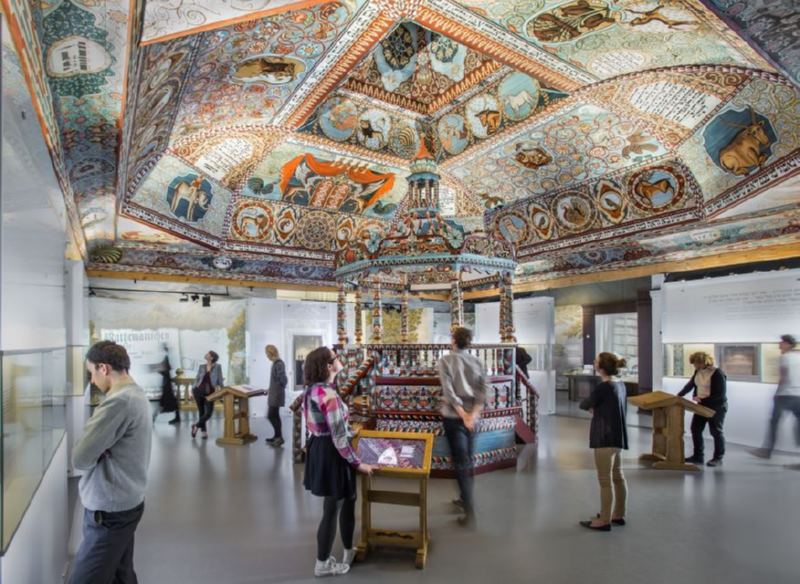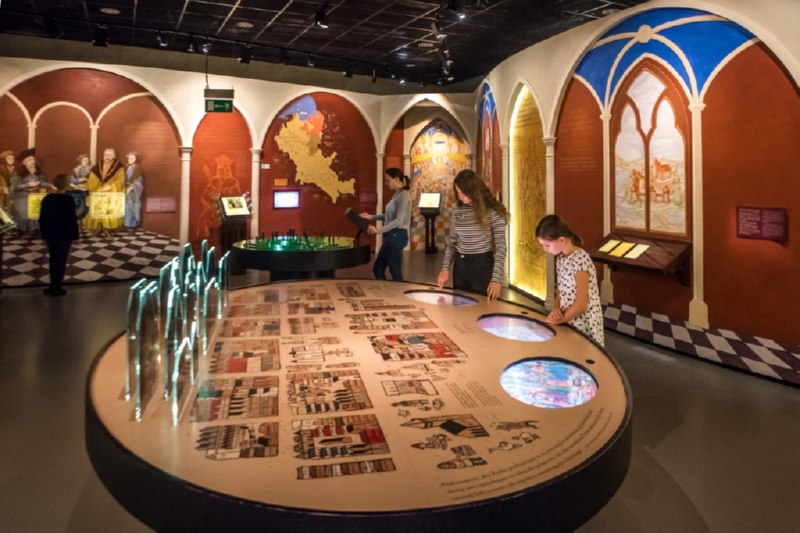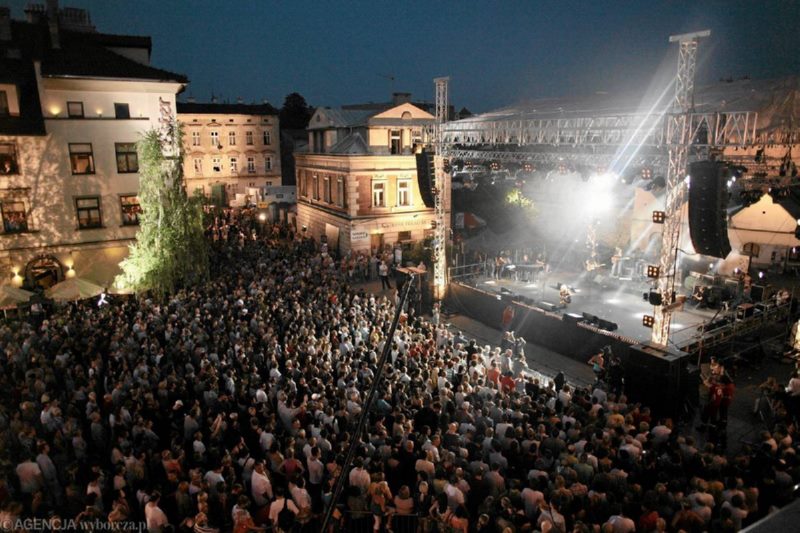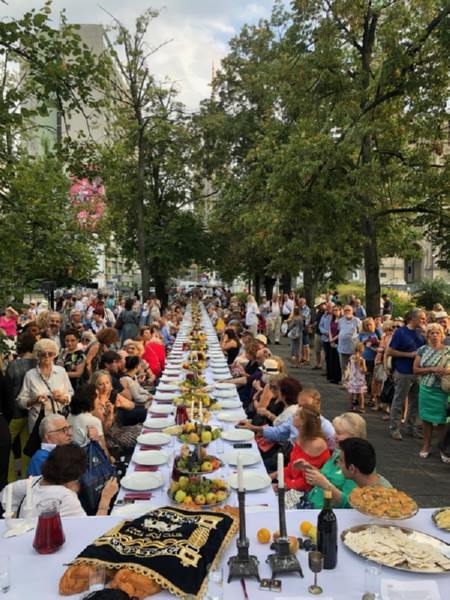Due to Shoah/ Holocaust and later communist purges, there are very few Jews living in Poland nowadays. Still, the culture of Polish Jews is remembered. Both by Jews themselves and Poles/Polesses.
Even internationally.
Hasidim came from all over the world to pray at the grave of Tzaddik Elimelech in Leżajsk (Podkarpackie county) on Sunday on the 237th anniversary of his death. In total, up to 10,000. Jews are expected to come.
This is the second visit this year of Hasidim to the grave of Tzaddik Elimelech in Leżajsk. They first arrived at the end of February. Then, much fewer Hasidim took part in the celebrations - about 2-2.5 thousand.
Celebrating the anniversary of the death of Tzaddik Elimelech twice is related to the Jewish calendar. The tzaddik died in the month of Adar (21st day of this month according to the Hebrew calendar), which falls approximately in March. But from time to time - in leap years - Adar occurs twice, hence the Hasidic pilgrimages on two dates.
As the director of the Hasidic Foundation Leżajsk-Polska Michał Konieczny said, the first groups of Jews began to arrive on the night from Saturday to Sunday. Others arrived throughout Sunday, until the evening. They came from Europe, the USA, Canada and Israel. After the prayers ended, some of them left the city and gave way to other groups. This is due to limited accommodation options .
He added that since Thursday, a group of approximately 700 Hasidim remained in Leżajsk, who spent Shabbat here and stayed until Sunday's celebrations.
Konieczny reported that on Monday at At 12 there will be a yortiat breakfast (yortiat - death anniversary), after which the last Hasidim will leave Leżajsk.
Why do Hasidim come to Leżajsk?
Hasidim coming to Leżajsk believe that on the anniversary of his death (he died on March 11, 1787), the tzadik descends from heaven and takes to God their requests for health, prosperity for children or success at work. They write them down on pieces of paper called kwitele and leave them at the tzaddik's grave. Prayers at the tomb, the so-called the ohel is accompanied by traditional dances and singing of psalms.
Prayers and all rituals last two or three hours. After prayers, Jews eat a kosher meal, including: from properly prepared beef, fish, fruit and vegetables.
For Hasidim, Leżajsk, together with the grave of Tzaddik Elimelech, is one of the holiest places in the world. Hasidim come there not only to celebrate the anniversary of the tzaddik's death, but also to celebrate various Jewish holidays and during private pilgrimages and trips around Poland.
Elimelech was one of the three most famous tzaddikim of ancient Poland. He became famous as a healer of souls and bodies and as the most active preacher of Hasidism - a rebellious religious and mystical trend in Judaism. This movement was born in the 1730s in Ukraine and areas of south-eastern Poland. He preached that God could be served not only by fulfilling the law and prayer, but also by doing everyday duties. In 1772, the tzadik established the center of his activities in Leżajsk.
Leżajsk, inhabited by a very large Jewish community, was one of the most important centers of Hasidism in Poland until World War II. The tradition of visiting the grave of Tzaddik Elimelech of Leżajsk was revived again in the 1970s.
onet.pl/turystyka/onetpodroze/zydzi-z-calego-swiata-w-polskim-miescie-wszystko-z-jednego-powodu/lt23l0v,07640b54
Even internationally.
Hasidim came from all over the world to pray at the grave of Tzaddik Elimelech in Leżajsk (Podkarpackie county) on Sunday on the 237th anniversary of his death. In total, up to 10,000. Jews are expected to come.
This is the second visit this year of Hasidim to the grave of Tzaddik Elimelech in Leżajsk. They first arrived at the end of February. Then, much fewer Hasidim took part in the celebrations - about 2-2.5 thousand.
Celebrating the anniversary of the death of Tzaddik Elimelech twice is related to the Jewish calendar. The tzaddik died in the month of Adar (21st day of this month according to the Hebrew calendar), which falls approximately in March. But from time to time - in leap years - Adar occurs twice, hence the Hasidic pilgrimages on two dates.
As the director of the Hasidic Foundation Leżajsk-Polska Michał Konieczny said, the first groups of Jews began to arrive on the night from Saturday to Sunday. Others arrived throughout Sunday, until the evening. They came from Europe, the USA, Canada and Israel. After the prayers ended, some of them left the city and gave way to other groups. This is due to limited accommodation options .
He added that since Thursday, a group of approximately 700 Hasidim remained in Leżajsk, who spent Shabbat here and stayed until Sunday's celebrations.
Konieczny reported that on Monday at At 12 there will be a yortiat breakfast (yortiat - death anniversary), after which the last Hasidim will leave Leżajsk.
Why do Hasidim come to Leżajsk?
Hasidim coming to Leżajsk believe that on the anniversary of his death (he died on March 11, 1787), the tzadik descends from heaven and takes to God their requests for health, prosperity for children or success at work. They write them down on pieces of paper called kwitele and leave them at the tzaddik's grave. Prayers at the tomb, the so-called the ohel is accompanied by traditional dances and singing of psalms.
Prayers and all rituals last two or three hours. After prayers, Jews eat a kosher meal, including: from properly prepared beef, fish, fruit and vegetables.
For Hasidim, Leżajsk, together with the grave of Tzaddik Elimelech, is one of the holiest places in the world. Hasidim come there not only to celebrate the anniversary of the tzaddik's death, but also to celebrate various Jewish holidays and during private pilgrimages and trips around Poland.
Elimelech was one of the three most famous tzaddikim of ancient Poland. He became famous as a healer of souls and bodies and as the most active preacher of Hasidism - a rebellious religious and mystical trend in Judaism. This movement was born in the 1730s in Ukraine and areas of south-eastern Poland. He preached that God could be served not only by fulfilling the law and prayer, but also by doing everyday duties. In 1772, the tzadik established the center of his activities in Leżajsk.
Leżajsk, inhabited by a very large Jewish community, was one of the most important centers of Hasidism in Poland until World War II. The tradition of visiting the grave of Tzaddik Elimelech of Leżajsk was revived again in the 1970s.
onet.pl/turystyka/onetpodroze/zydzi-z-calego-swiata-w-polskim-miescie-wszystko-z-jednego-powodu/lt23l0v,07640b54
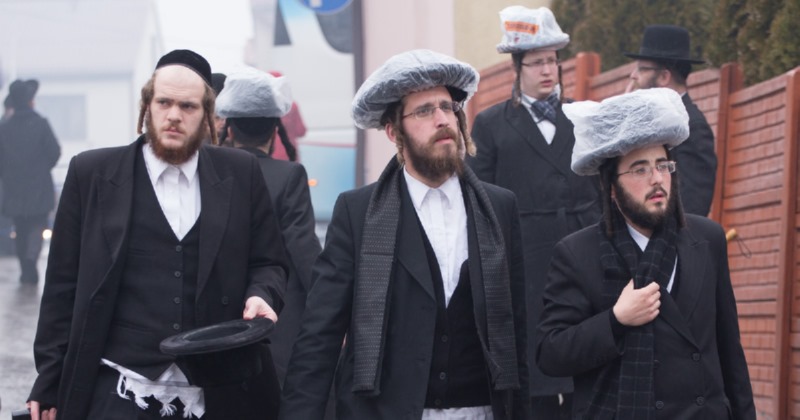
chasydzizcalegosw.jpg
mid24331144Kopiow.jpg

